Mazda CX-60 E-Skyactiv D
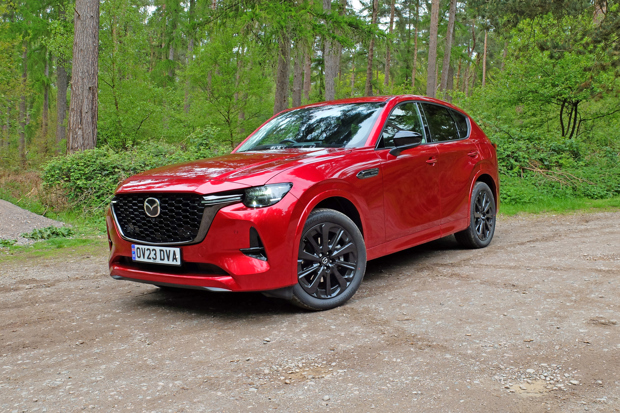
Specifications: Mazda CX-60 E-Skyactiv D Homura
- Run by: David Ross (since April 2024)
- Price when new: £50,720 (£55,704 including options)
- Power: 254PS
- Torque: 550Nm
- Claimed economy: 54.3mpg
- CO2 emissions: 138g/km
- 0-62mph: 7.4 seconds
- Report 1: We welcome the new Mazda CX-60 to our long term fleet
- Report 2: Mazda bucks the trend by launching an all-new diesel
- Report 3: How does the CX-60 perform as a family car?
- Report 4: Mazda CX-60 diesel - the car with no direct rivals?
- Report 5: The Mazda's fast engine idle clean
- Report 6: Is the Mazda 3.3d engine any good?
- Report 7: Is the CX-60 let down by its ride quality?
- Report 8: The final verdict on the Mazda CX-60
Report 1: We welcome the new Mazda CX-60 to our long term fleet
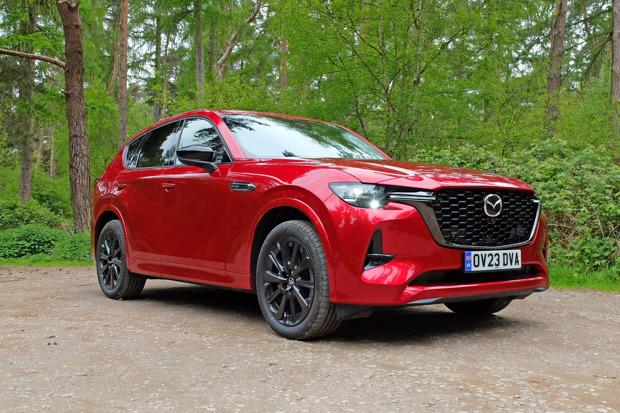
Date: 3 May 2024 | Current mileage: 3000 | Claimed economy: 54.3mpg | Actual economy: 46.2mpg
After saying goodbye to the Audi e-tron GT we're welcoming something that should be a bit more family friendly - the new Mazda CX-60. And intriguingly, it's a diesel. Despite diesel sales seemingly having fallen off a cliff - diesels now account for just 7% of all new car registrations - Mazda is going against the grain by launching a new diesel engine in the Mazda CX-60.
It's not just any diesel either - Mazda has developed a 3.3-litre six cylinder engine for the Mazda CX-60 that is available with more than 250PS if you opt for the all-wheel drive version as we have done. This sits alongside the 2.5-litre plug-in hybrid in the Mazda CX-60 range but is surprisingly more expensive.
Our mid-sped Mazda CX-60 Homura model costs £50,720 on the road - a £2500 premium over the faster and (officially) more economical PHEV model. Our car has a few extras fitted including including a detachable tow bar at around £1200, the panoramic roof which costs £1000 plus the Convenience and Driver Assistance Pack at £1900.
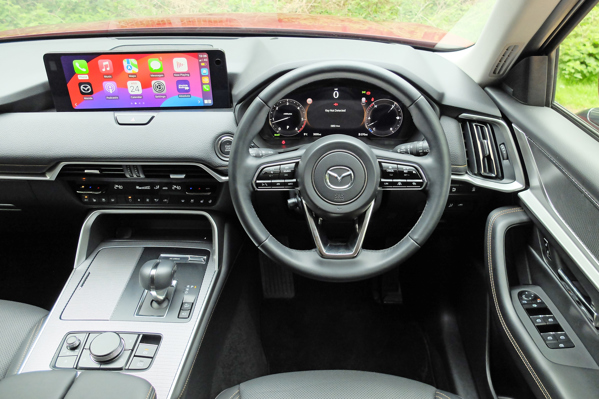
The latter includes things like the 360 view monitor, a wireless charging pad and rear privacy glass. In total it means our car comes in at £55,700. That puts it firmly in Mercedes GLC and BMW X3 territory which means it's up against some tough competition.
It certainly looks the part though. It may not be the most daring design, but it's a smart looking SUV and the imposing front end helps it stand out. I went for a strong colour - Soul Red Crystal - which costs a few hundred quid more than the other paint choices - but I think really makes a big difference.
Being a Tomura trim, our car gets black alloys along with a honeycomb design grille, black mirrors and black trim rather than chrome. It's a great combination in my opinion and the best choice for the Mazda CX-60. The colour has already gotten the children's seal of approval, so it's off to a good start.
Over the next six months we'll be using the Mazda CX-60 as our main family car, which means dealing with three children and one dog. There will be a few holidays along the way too so we'll be able to see how it copes when everything is thrown at (and in) it...
Report 2: Mazda bucks the trend by launching an all-new diesel
With many car buyers abandoning diesel in favour of petrols and hybrids, it's a bold move for Mazda to launch an all-new diesel in the CX-60.
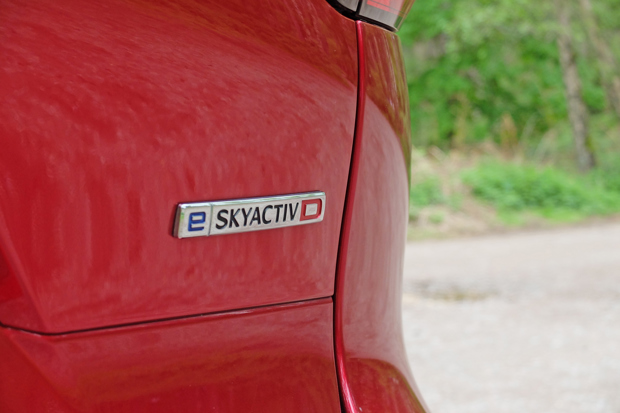
Date: 24 May 2024 | Current mileage: 3244 | Claimed economy: 54.3mpg | Actual economy: 47.0mpg
Rewind 10 years if you will. David Cameron is PM, no one had even heard of Covid and the World Cup is underway in Brazil. At the same time, diesel cars are the biggest sellers in the UK. In fact, they account for more than 50% of all new car registrations while hybrid and electric cars make up less than 2% of the market.
Fast forward to 2024 and while David Cameron has made a return to the front benches, diesels have dropped like a stone. The latest new car registration stats show that less than 7% of new cars are now diesels. Indeed many manufacturers such as Volvo - have dropped diesels from their range altogether - while most small cars are now petrol or hybrid only.
Strange then, that Mazda has made the decision to launch an all-new diesel engine in the new Mazda CX-60. Rather than borrow an existing diesel, Mazda has developed its own 3.3-litre six-cylinder unit and at the time of writing, it's the only new diesel engine that has been launched in 2024.
So the big question is why? Mazda initially launched the CX-60 with the 2.5-litre plug-in hybrid engine, which given the current demand for PHEVs, made perfect sense. With an electric range of 40 miles it's ideal for school runs and short commutes.

The reason for the diesel, according to Mazda, is for drivers who want an efficient, long distance car with a good towing capacity. And the reason it's a 3.3-litre six-cylinder diesel is to give the CX-60 a large premium SUV feel.
Rivals like the BMW X3 and Audi Q5 only come with 2.0-litre diesels, while the Hyundai Santa Fe has a 2.2-litre diesel so Mazda is hoping the bigger engine while give the CX-60 an edge.
Interestingly, depsite the new diesel engine, the CX-60 PHEV will still be the biggest selling version in the UK. But it does show that despite the demonisation of diesel, there is still demand for it among new car buyers. Mazda may be moving to electrification, but with a diesel still available in the CX-5 and this new diesel in the CX-60, it realises that electric cars don't work for everyone.
Switching from the all electric Audi e-tron GT to the diesel Mazda CX-60 has been somewhat of a culture change. But I've quickly been reminded just how enjoyable a good six-cylinder diesel is - and the 3.3-litre unit in the Mazda is one of the best around. Who needs a PHEV...
Report 3: How does the CX-60 perform as a family car?
With three children and a dog, it tends to be pretty chaotic whenever our family heads out so a car with plenty of space is a must.
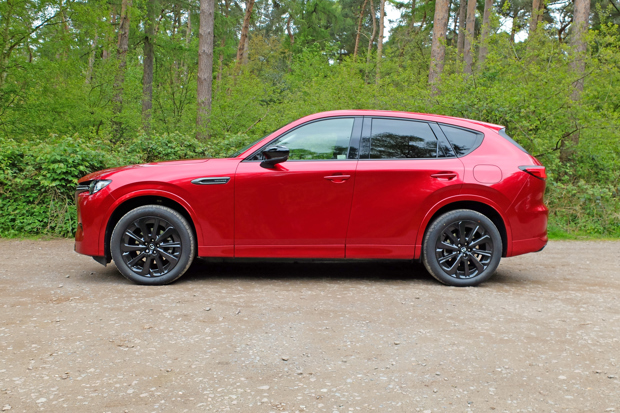
Date: 14 June 2024 | Current mileage: 3637 | Claimed economy: 54.3mpg | Actual economy: 46.1mpg
It can be a mission in itself just getting three children (aged 11, 9 and 3) out of the door, along with Rosie the dog. And that's before we've got them into the car. So having something big, spacious and that they can easily get into, makes all the difference.
It's one of the reasons we had to change our own car, swapping from a sensible Skoda Superb Estate to an enormous Audi Q7 with seven seats. While the Mazda CX-60 isn't quite as big as the Q7, it's still a substantial car at 4.7 metres long, so you'd expect plenty of space inside.
But for some reason, the Mazda CX-60 is very tight for rear legroom. It's quite baffling as it's not as if the boot is especially long, yet our two eldest kids often complain that they don't have very much room at all. It means both front passengers have to slide their seats forward quite a bit.
The problem is even more noticeable with our youngest who is in a Joie car seat with a supporting leg. With the rear space already tight, it means the front passenger seat has to move even further forward if you want to prevent a grumpy 3 year old from 'accidentally' kicking the back of your seat on a two hour journey...

The picture above shows my usual driving position (at 6ft2) and as you can see, it's pretty tight. Having sat there behind myself, as it were, it's not the most comfortable position and I certainly wouldn't want to travel for long distances.
I recently parked our Mazda CX-60 next to a previous generation BMW X5 - the two are pretty close in size - yet I remember that X5 having plenty of rear legroom, certainly more than our Mazda. It seems strange in a family car that there'd be so little space.
On the plus side, the boot is usefully large, so the dog is always happy back there. At least she gets plenty of space! Plus there's an electric tailgate, although due to its design, it tends to stop at an odd height - for me at least. I've managed to smack my head on it more than a few times already when trying to get the dog in.
In the summer, the CX-60 will be ferrying the family down to Devon for a week which will be its first truly long distance test...
Report 4: Mazda CX-60 diesel - the car with no direct rivals?
With its 3.3-litre diesel engine and £50k price tag, the CX-60 is a hard car to find obvious rivals for.
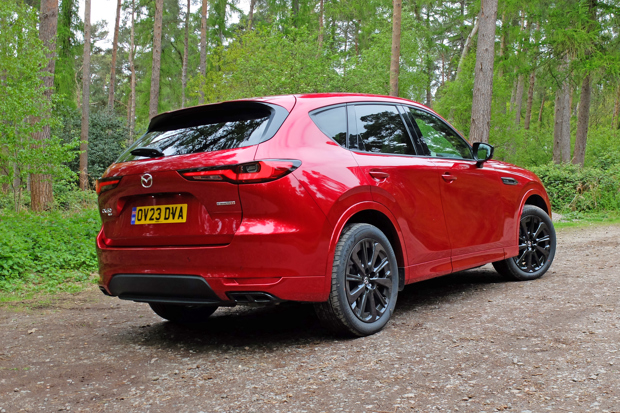
Date: 28 June 2024 | Current mileage: 4031 | Claimed economy: 54.3mpg | Actual economy: 45.4mpg
Is the Mazda CX-60 diesel a stroke of genius? While Mazda has gone against the grain in launching a big 3.3-litre six-cylinder in the CX-60, it means there are no natural rivals on the market. Certainly none with as big and powerful an engine.
While a £50k price tag is not to be sniffed at, if you start looking at similar sized five-seat rivals with six-cylinder diesels, you'll be paying a lot more.
Why? Well with diesel now being about as popular as Jeremy Corbyn at Labour HQ, many brands have switched to smaller diesel engines in their SUVs. Or indeed ditched it completely, switching to petrol hybrid and plug-in hybrid models. Case in point is the new Hyundai Santa Fe which only comes as a hybrid or PHEV and starts at more than £51,000.
If this was the PHEV version, we'd be spoilt for choice. You could put the CX-60 plug-in hybrid up against the likes of the Honda CR-V, Volvo XC60 and the new Skoda Kodiaq. But out of those three, only the Skoda is still available with a diesel engine, that a four-cylinder 2.0 TDI.
Even if you go premium you will struggle to find anything that competes. Yes the bigger BMW X5 comes with a 3.0-litre diesel but it also costs from £70k new while the cheapest equivalent Q7 (the 45 TDI) is £65k. As for a Mercedes GLE, you won't see much change out of £75k.
You could go smaller, but Audi no longer offers a 3.0 diesel in the Q5 and that's the same story for the BMW X3. Mercedes does a 300d version of the GLC still, although it's £62k
Its one main rival we'd have banked on is the Volkswagen Touraeg, which - hurrah - still comes with a 3.0-litre V6 diesel engine. It too is a big five-seat SUV but the big difference is price. The cheapest VW Touareg 3.0 TDI is currently £68,065. No wonder you don't see many around...
So that leaves the Mazda CX-60 diesel on its own. The only new SUV with a six-cylinder 3.0-litre engine (well 3.3-litre actually) that comes in at £50k.
Report 5: The Mazda's fast engine idle clean
Since we've taken delivery of our Mazda CX-60, it's decided several times to carry out a fast idle engine clean. So what is it?
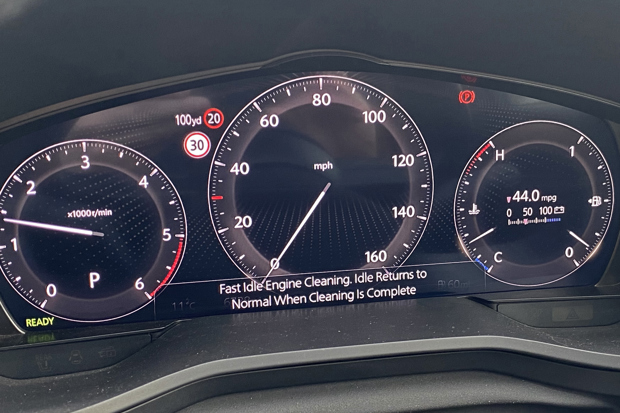
Date: 12 July 2024 | Current mileage: 4443 | Claimed economy: 54.3mpg | Actual economy: 44.4mpg
After only a few days of having our Mazda CX-60, I parked on the drive and put the car in park as usual. But before I had time to switch it off, the above message popped up on the dash.
Apparently our car was carrying out a 'fast idle engine clean'. Which means the engine sitting at just under 1500rpm while parked. So I sat there while it carried it out. And 10 minutes later, after the neighbours had started peeking through the blinds to see what was going in, it finally finished.
A few days later, again just after parking up at Morrisons, the same thing happened. It was another 10 minutes of revs although this time it did at least save me a trip round the shops with my other half. Of all hundreds of different the vehicles I've driven over the past 20 odd years of testing cars, this is something I've never seen before.
So what exactly is it? Apparently it's the engine cleaning the diesel injectors. If the engine is used for short periods, condensation can form inside them, so the fast idle will purge the fuel in the injectors.
According to Mazda, the cleaning idle is totally normal. It’s simply just a self-cleaning function and can occur if you do a lot of short stop/start journeys. Since those two incidents, the Mazda hasn't done it again, so clearly longer drives are helping things.
You can override it by simply putting it in drive and it will disappear, although more than likely it will pop-up next time you stop unless you've driven a decent distance. Given this is a pretty much new CX-60, I thought it best to let it do its thing.
Of course, being a diesel, the Mazda CX-60 isn't really designed for lots of short journeys. This kind of driving can often cause DPF problems for diesels where soot builds up as the DPF doesn't get hot enough to burn it off. This usually requires a forced regeneration if a decent run doesn't clear it.
Aside from that, the Mazda CX-60 has performed pretty much faultlessly and the engine feels like it's starting to loosen up too, while fuel economy is also settling down to a decent 44mpg.
Report 6: Is the Mazda 3.3d engine any good?
Rather than buying in an engine, Mazda has developed its latest 3.3-litre diesel in-house. So what's it like?
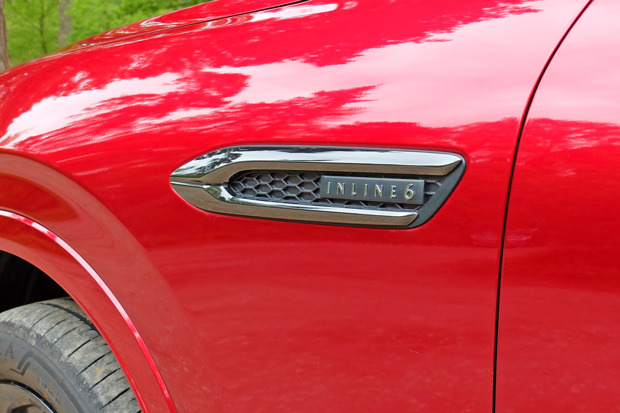
Date: 7 August 2024 | Current mileage: 4921 | Claimed economy: 54.3mpg | Actual economy: 44.7mpg
In a world where every other new car seems to be a plug-in hybrid, if not a full EV, it's a rarity that we get a new diesel engine. But then again Mazda is not one to follow convention.
When everyone was turbocharging their petrol engines, Mazda stuck with normal aspirated engines, instead using what it called its Skyactiv tech to improve performance and fuel economy at the same time.
So while there is a Mazda CX-60 2.5-litre petrol PHEV, it's the 3.3-litre diesel which is the more intriguing. Especially as rather than use an existing engine from another manufacturer such as Toyota - with whom Mazda already works closely with for the Mazda 2 Hybrid (essentially a rebadged Toyota Yaris) - Mazda decided to develop its own. No cheap feat.
The result is the straight-six 3.3-litre diesel that will also be used in the forthcoming Mazda CX-80, the larger seven-seat version of the CX-60. With 245PS it's not as powerful as the likes of the 30d engine in the BMW X5 but thanks to the 550Nm of torque it rarely feels slow.
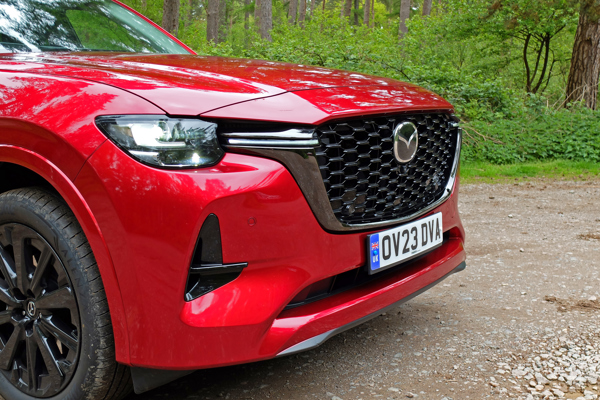
In fact that comparison with BMW is pretty apt as the Mazda 3.3d is very much like a BMW diesel engine in character. It has a similar muscular feel when you accelerate and even sounds the same.
The gearbox really helps here, the 8-speed automatic is perfectly tuned to deliver response when you need it while still being smooth at lower speeds. It means the CX-60 has a rapid turn of pace when required. That said, in order to improve the fuel economy, which currently hovers around 44mpg - I've been driving with a gently right foot of late.
The one thing I'm not a fan of however is the Mazda's intrusive start/stop system - or i-Stop as Mazda labels it. It cuts in early, before you've come to a stop, but isn't that quick to switch back on. So if you're slowing down for a roundabout and then want to accelerate - you'll find yourself waiting a second for it to come back to life.
More annoying however, is the fact it switches the engine off when coasting. And again, there's a delay when you put your foot back on the accelerator. It's probably less than a second, but it's noticeable enough that I tend to turn i-Stop off whenever I drive it.
Report 7: Is the CX-60 let down by its ride quality?
While there's lots to like about the Mazda CX-60, the one fly in the ointment is the ride quality which is arguably too firm for a family car.

Date: 2 September 2024 | Current mileage: 5466 | Claimed economy: 54.3mpg | Actual economy: 44.9mpg
For the most part, the modern family SUV tends to favour comfort over handling. With the exception of a few cars, your common or garden SUV is one that's designed to be easy to drive, rather than involving or especially enjoyable.
But Mazda has never been one to follow the norm. The company has shunned turbocharged petrols, instead sticking with normally aspirated engines and using its Skyactiv tech to help improve economy. And as I've already mentioned, at a time when nearly all manufacturers are dropping diesel, Mazda has launched a new six-cylinder engine.
It's also one of the few remaining brands where handling is still high up the list of strengths. It's one of the reasons we often recommend Mazda models to people looking for something that's enjoyable to drive but still performs as an everyday car.
However, there are downsides to this. And in the case of the CX-60, it's the ride quality. While there are lots of good things about the big Mazda, the overly firm suspension really sticks out like a sore thumb. If anyone asks me about what the CX-60 is like, the ride is the one thing I can't ignore.
It's a real shame as the rest of the car is so likeable, especially the great 3.3-litre diesel engine. But the ride is just too firm in my opinion. I recently drove a Skoda Kodiaq and it felt smooth, relaxing and serene in comparison to our Mazda.
And while I can put up with it for the sake of decent handling, when we have our three children in the back along with the dog, going round corners quickly is the least of my priorities. Instead all I want is a forgiving ride, something which the CX-60 doesn't really do.
It's not just a diesel engine trait either. The 2.5-litre PHEV version is equally as firm. It's less of an issue on motorways, but around town and on the poor quality local roads near me, the CX-60 just isn't very comfortable. It would benefit from air suspension, although this would likely see the price tag rise.
It will be interesting to see if there are any changes to the suspension and dampers with the launch of the seven-seat Mazda CX-80, given its extra weight and length.
Report 8: The final verdict on the Mazda CX-60
After six months we're handing back the keys to the Mazda CX-60 so what's the final verdict on the family SUV?

Date: 24 October 2024 | Current mileage: | Claimed economy: 54.3mpg | Actual economy: Actual economy: 44.7mpg
After six months it's already time to hand back the keys to the Mazda CX-60. And as a family car we're going to miss it. It's performed its duties admirably, taking the five of us (and the dog) all round the country as well as covering the school run and a couple of holidays too.
Could it be better? Arguably yes. There are a few areas where it doesn't quite tick the right boxes. The rear space is one - for a big SUV there's a surprising lack of legroom for those sat in the back. It's not too bad for our 11 and 9 year old but we think teenagers would find it tight. For us the real issue is caused by the car seat for our three year old.
Like many car seats, his Cybex Anoris has a support leg which means it takes up more space. This isn't an issue in bigger cars like the Skoda Superb and so we thought it would be fine in the CX-60. However, we have to move the front passenger seat forward a fair way to give us enough space - and to not have the seat kicked for the whole journey.
On the plus side, the boot is huge. The 570-litre space is a usefully square shape, with a large opening and underfloor storage. We managed to squeeze plenty in for holidays and days out. It's a shame those reclining rear seats don't also slide to give you more space for passengers.

We found the infotainment system in the Mazda CX-60 a little hit and miss. On the whole it's positive - the layout and menus are intuitive and it's easy to navigate. It's strange however that the touchscreen only works when parked. On the move you have to use the scroll wheel (which being the age I am - I find easier) but it's a little clumsy when you're in Apple CarPlay mode.
And talking of Apple CarPlay, that has started to become an issue in the past few weeks. For some reason, it often doesn't connect, meaning I have to delete the Bluetooth connection from my phone and start again. Not ideal when you're rushing to get the children to school on time...
But these gripes aside, the Mazda CX-60 has a lot to recommend it. The 3.3-litre engine is superb, one of the best big diesel engines out there with plenty of low down power and response when needed, while also being quiet at motorway speeds. It's been reasonably economical too, hovering around 45mpg during its time with us.
But perhaps what really appeals about the Mazda CX-60 is the value for money. True it may not have a BMW badge or similar on the grille, but it feels like a premium car inside and drives like one too. And while £50k is not what you'd call cheap, compared to the competition - and given the long list of standard equipment - it's good value. An equivalent VW Touareg will set you back close to £70k. That's one heck of a price difference and it's why we think the CX-60 is well worth considering as a family SUV.
